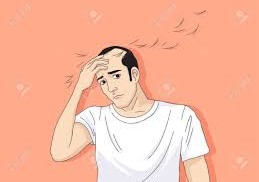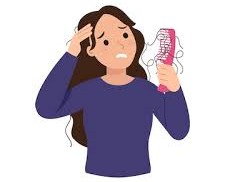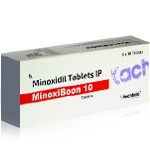The Silent Struggle of Hair Thinning


What is Hair Thinning and Why Does it Happen?
Hair thinning is something that many people notice gradually. At first, it may seem like just a little extra shedding, but over time the hair begins to look less full. This can happen to both men and women and is not always linked to aging alone. Understanding the basic reasons behind thinning can help in finding the right way to deal with it.
- It happens when hair strands become weaker, finer, or reduce in number.
- Genetics often play a strong role in how and when hair starts to thin.
- Hormonal changes, stress, or health conditions can also affect hair density.
- Poor nutrition and harsh treatments may speed up the thinning process.
Hair thinning is not just about appearance. It often brings emotional stress and lowers self-esteem, making it a problem that goes beyond the surface.
Common Everyday Causes of Hair Thinning
Daily life habits may seem harmless, but they can quietly contribute to thinning hair. Many people are not aware that the way they style, treat, or even wash their hair can slowly damage it. Over time, these small choices weaken hair roots and make the strands more fragile.
- Overuse of styling tools such as flat irons and blow dryers.
- Frequent use of chemical treatments, including dyes and perms.
- Tight hairstyles that pull on the scalp for long periods.
- Lack of proper rest and continuous stress.
By being mindful of these habits, it is possible to protect hair and prevent further damage.
The Role of Diet and Nutrition in Hair Health
Food plays an important role in how hair looks and feels. When the body does not get the right nutrients, hair is often one of the first places where the signs show. A poor diet not only makes hair thinner but also makes it dull, brittle, and lifeless. Making simple changes in nutrition can support better growth and strength.
- A lack of protein can weaken hair and slow growth.
- Not getting enough vitamins like B, D, and E may cause breakage.
- Iron and zinc are minerals that support strong and healthy hair.
- Drinking enough water keeps the scalp and hair hydrated.
Balanced meals are not just for the body; they are also fuel for stronger, fuller hair.
Stress and Hormonal Changes
Emotions and physical changes in the body have a direct link to hair health. Stress, whether short-term or long-term, can disrupt the natural cycle of growth and rest. Hormonal changes, such as those during pregnancy, menopause, or health conditions, also influence how strong or weak hair becomes. These changes may make hair thin faster than expected.
- High stress can push more hair into the shedding phase.
- Pregnancy, menopause, or thyroid changes may lead to thinning.
- Sudden weight loss or illness can disrupt normal hair cycles.
- Medications for other health issues sometimes have side effects that impact hair.
Finding ways to reduce stress and seeking help for hormonal changes can make a real difference in slowing hair thinning.
Early Signs You Should Notice
Hair thinning usually starts slowly, and many people overlook the first warning signs. Paying attention early makes a big difference because once hair loss becomes advanced, it is much harder to manage. Being aware of these changes allows people to act before the problem worsens.
- Wider part lines appearing on the scalp.
- More hair than usual on pillows or in the shower drain.
- A ponytail that feels smaller or weaker.
- A scalp that is more visible under natural light.
Acting quickly when these signs appear can help protect hair and prevent more loss.
Exploring Solutions for Hair Thinning
The good news is that hair thinning can often be managed with changes in routine and care. Simple steps taken at home may strengthen the hair and improve its appearance. These methods are natural and work best when started early, before thinning becomes severe.
- Improving nutrition and adding supplements when needed.
- Using gentle shampoos that do not strip natural oils.
- Avoiding harsh treatments and heavy styling products.
- Giving the scalp regular massages to improve blood flow.
Small lifestyle changes can often help hair stay healthier and reduce the pace of thinning.
The Role of Minoxidil (Minoxiboon) in Supporting Hair Regrowth
For those who want more support, medical solutions can be very effective. Minoxiboon, which contains Minoxidil, has been researched as a treatment to encourage hair regrowth. Unlike natural care methods alone, this solution directly targets the hair follicles and helps them stay active longer. This makes it especially useful for people with noticeable thinning.
- It works by stimulating hair follicles and encouraging regrowth.
- Regular use may help thicken hair strands and improve coverage.
- Both men and women have noticed improvements when it is used regularly.
- It is often suggested when other measures are not bringing results.
This approach offers a practical option for those looking for medical support alongside daily care.
Minoxidil (Minoxiboon) as a Long-Term Support Option
Hair regrowth is a slow process, and results require patience and consistency. Using Minoxiboon regularly over time can give visible improvements, but stopping too soon may bring the problem back. This is why it is best to view it as part of a long-term hair care plan rather than a quick fix.
- Results are usually seen after a few months of continuous use.
- Stopping use may cause hair to thin again, so commitment matters.
- It works best when combined with healthy lifestyle habits.
- Talking with a healthcare professional before starting can help find the best routine.
With the right approach, people can see real improvements in both hair health and self-confidence.
Final Thoughts
Hair thinning is a challenge that affects appearance, confidence, and well-being. By understanding the causes, paying attention to early signs, and making small changes, it is possible to slow or even improve the problem. For those needing extra help, solutions like Minoxiboon provide another path toward healthier and fuller hair. The journey requires patience, but with the right steps, it is possible to bring back strength and thickness.
Drug Description Sources:
U.S. National Library of Medicine Drugs.com WebMD Mayo Clinic RxList
Reviewed and Referenced By:
- Dr. Alan Carter, PharmD
Clinical pharmacist specializing in chronic pain management and antiepileptic drugs. Frequently cited on Drugs.com for reviewing therapeutic guidance on Pregabalin’s pharmacokinetics, dosage, and safety profile.
- Dr. Emily Johnson, MD
Pediatric specialist focusing on infectious diseases and childhood conditions. Regular contributor to WebMD articles on ear infections and antibiotic treatments.
- Dr. Michael Rivera, PharmD
Expert in antibiotic therapy and drug safety, often referenced on RxList for clinical insights and drug safety evaluations.
- Dr. Susan Miller, MD
Endocrinologist with focus on hormone-related conditions and women’s health, frequently contributing to Mayo Clinic resources on metabolic and hormonal effects on hair and overall health.
- Dr. James Thompson, MD
Internal medicine specialist who has provided peer-reviewed contributions to the U.S. National Library of Medicine on health conditions, medication safety, and treatment guidance.
Article Post:Editorial Team of RXShop.md
(Updated at Sep 6 / 2025)

